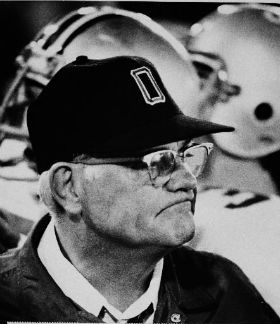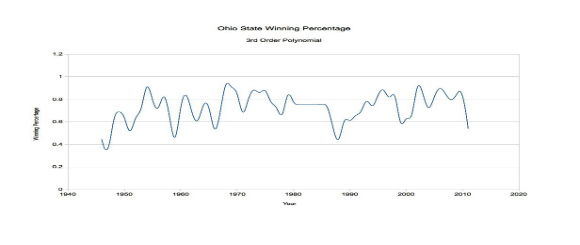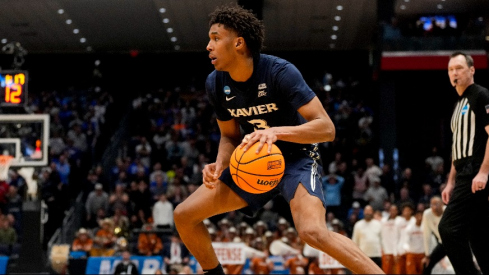 Woody knew war with Michigan
Woody knew war with Michigan The parallels between the college football system and the modern international political system are striking.
In each system, political and football, sovereign entities jockey with other sovereign entities for power and influence in a pseudo-anarchic environment.
College football programs, like countries, are concerned with maintaining and improving their relative position of power amongst other programs. Some football programs must even be concerned for their very survival like Northeastern's program recently or UChicago's in 1939.
In fact, the structure of the international system and college football have enough similarities that we might use the international relations theory to understand college football and vice-versa. Not only do college football programs operate under similar structural conditions and face similar incentives as modern states, they also behave in similar ways.
In international relations, interstate wars often serve as one of the best indicators for measuring a state's power because generally the stronger country will win (there are plenty of examples of weaker countries winning conflicts, but that's a topic for a future stat session).
In college football, conflict is the raison d'être for the system to exist at all. Football programs "go to war" (and I compare the two only to continue my analogy - utmost respect to all service members) each week, allowing us to approximately gauge which team is stronger.
College football programs also rise and decline in something approximating relative power cycles as well, which is what I'd like to focus on today.
One branch of international relations theory argues that states are subject to long-term cycles of relative power:
As a state gains in power relative to others, its capacity to exercise leadership grows; as it falls behind, the capacity to influence international politics wanes...When we speak to 'cycles of development,' we refer not to such repetition but to a particular nonlinear pattern of change.
As states rise and decline relative to others in the international system, they are presented with different strategic options according to their relative power.
 Hate seeing that final drop off for 2011
Hate seeing that final drop off for 2011Applying this theory and methodology to college football is fairly straightforward, but has the potential to say a lot about how college football programs manage their rise and decline. The goal, at least for the college football side, is to uncover how programs like Boise State may start from low levels of power and influence to becoming a national brand. On the flip side, it's worth understanding how national powers like Texas have decline in recent years from being at the top of the food chain.
Though it's definitely subjective, I started with the "modern era" of college football after 1945, charting Ohio State's winning percentage each year.
I then plotted these winning percentages using a third order polynomial regression, consistent with power cycle theory in international relations. This allows us to better observe broader, gradual and longer-term program trends and smooth out individual year fluctations. We're less interested in one year 6-7 seasons (though this is still captured and is interesting) as we are in several years of declining winning percentages.
The above graph results from the third order polynomial of Ohio State winning percentages over time. It looks exactly how we might expect it to - peaks and troughs over time, with an average of three peaks and troughs per decade. One thing in particular stands out to me - how great the Tressel era really was - the peak-trough fluctations were so small compared to other periods in Ohio State football history.
In the next couple of weeks I'll be taking a look at the first and second inflection points for individual waves - that is, the points of rise and decline in each wave. The goal in the next few weeks will be to investigate the causes of these peaks and trough in power over time - how is Ohio State's experience different than other schools'?

